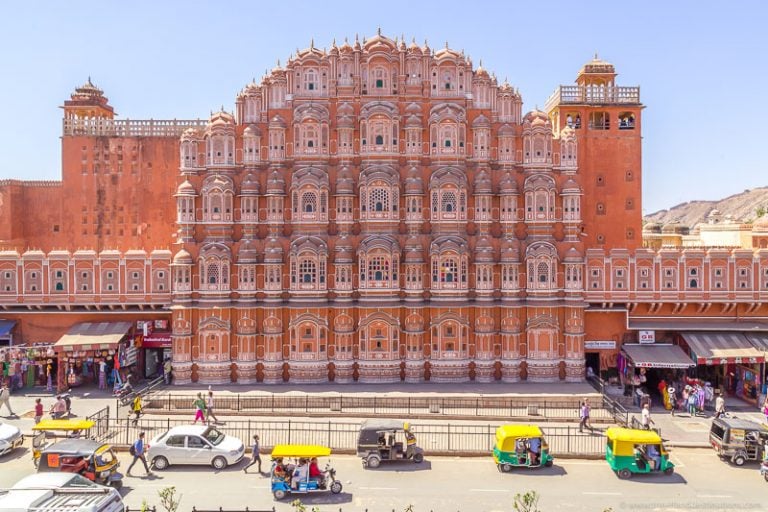
Menu


We will call you back to discuss your requirements.

Jaipur, the capital city of the Indian state of Rajasthan, is a city that exudes grandeur, charm, and a rich historical legacy. Known as the “Pink City,” Jaipur is renowned for its magnificent palaces, vibrant bazaars, and rich cultural heritage. Founded in 1727 by Maharaja Sawai Jai Singh II, Jaipur has a fascinating history that encompasses the rise of the Kachwaha dynasty, the blending of Rajput and Mughal influences, and the city’s evolution into a center of art, architecture, and commerce. In this essay, we will delve into the detailed history of Jaipur, exploring its foundation, the rule of the Kachwaha dynasty, significant historical events, and the architectural marvels that define the city.
With the assistance of Vidyadhar Bhattacharya, a talented architect and scholar, Maharaja Sawai Jai Singh II selected the site for the new capital in the fertile plains of Rajasthan. The foundation of the city was laid on November 18, 1727, and it was named after its founder, Maharaja Jai Singh II. The design and planning of Jaipur were meticulous, with the principles of Vastu Shastra and Shilpa Shastra influencing every aspect of its layout.
The history of Jaipur can be traced back to the 18th century when the Kachwaha Rajput ruler, Maharaja Sawai Jai Singh II, ascended the throne of Amber, a nearby kingdom that served as the ancestral capital of the Kachwahas. Jai Singh II was not only a skilled warrior but also a visionary ruler with a keen interest in science, architecture, and urban planning. He desired to establish a new capital that would be strategically located and designed according to the principles of Vastu Shastra, an ancient Indian architectural science. Jaipur was divided into nine rectangular sectors, representing the nine divisions of the universe according to Hindu cosmology. Each sector was further divided into smaller blocks, each dedicated to a specific trade or community. The city’s architecture was a harmonious blend of Rajput and Mughal styles, characterized by wide streets, grand palaces, and intricately designed buildings.
Under the rule of Maharaja Sawai Jai Singh II, Jaipur flourished both culturally and economically. Jai Singh II was not only a visionary architect but also a skilled administrator and an avid patron of arts and sciences. He established institutions such as the Jantar Mantar, an observatory equipped with various astronomical instruments, and a center for learning and research. The Jantar Mantar in Jaipur is recognized as a UNESCO World Heritage site and serves as a testament to Jai Singh II’s scientific prowess.The Kachwaha dynasty continued to rule over Jaipur for several generations, nurturing the growth of the city’s art, culture, and trade. Jaipur maintained close ties with the Mughals, who held significant power in the region during that period. This alliance provided Jaipur with protection, economic opportunities, and exposure to Mughal architecture and art forms. The rulers of Jaipur played a crucial role in supporting the Mughals during various military campaigns and diplomatic endeavors.One of the notable events in Jaipur’s history was the visit of Prince Albert Edward, the Prince of Wales, in 1876. To honor his visit, the city was adorned with pink-colored sandstone buildings, giving rise to its popular epithet, the “Pink City.” The color pink was chosen as a symbol of hospitality, and since then, the tradition of painting buildings pink has been upheld, particularly in the old city area.
During the era of British colonial rule, the Kachwahas of Jaipur continued to serve as the rulers of the city, albeit under the suzerainty of the British Crown. They maintained their administrative autonomy and played an active role in the development of Jaipur. The British influence can be seen in the city’s infrastructure, education system, and governance practices.After India gained independence in 1947, Jaipur became a part of the newly formed state of Rajasthan. The city continued to grow and modernize, while also preserving its cultural heritage and historical legacy. Today, Jaipur is a bustling metropolis that blends the old-world charm of its historical monuments with the conveniences of modern life. Its palaces, such as the Hawa Mahal, Amer Fort, and City Palace, continue to attract tourists from around the world.Jaipur is also renowned for its vibrant arts and crafts, including block printing, jewelry, textiles, and pottery. The city hosts several cultural festivals and fairs, such as the Jaipur Literature Festival and the Jaipur International Film Festival, which showcase its rich artistic traditions and provide a platform for creative exchange.
In conclusion, Jaipur stands as a testament to the vision, artistic brilliance, and cultural heritage of the Kachwaha dynasty. From its meticulously planned layout to its architectural marvels, the city reflects a harmonious blend of Rajput and Mughal influences. Jaipur’s history is a captivating narrative of royal patronage, architectural excellence, and the preservation of traditions. As the “Pink City” continues to evolve and thrive, it remains a living testament to its illustrious past and an embodiment of the rich heritage of Rajasthan.
After India gained independence in 1947, Jaipur became a part of the newly formed state of Rajasthan. The city continued to grow and modernize, while also preserving its cultural heritage and historical legacy. Today, Jaipur is a bustling metropolis that blends the old-world charm of its historical monuments with the conveniences of modern life. Its palaces, such as the Hawa Mahal, Amer Fort, and City Palace, continue to attract tourists from around the world.
Jaipur is also renowned for its vibrant arts and crafts, including block printing, jewelry, textiles, and pottery. The city hosts several cultural festivals and fairs, such as the Jaipur Literature Festival and the Jaipur International Film Festival, which showcase its rich artistic traditions and provide a platform for creative exchange.

Chittorgarh

Government handicrafts shopping complex dudh Talia Road Udaipur Rajasthan
9376082323
9649084899
9462900001